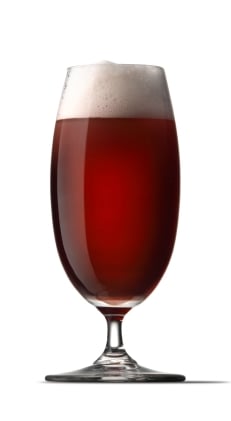
This week I take a look at some basic concepts of backsweetening as well as how to use the backsweeten tool in BeerSmith to sweeten beers, meads, wines and ciders.
Backsweetening Basics
Backsweetening is the process of adding sugar, juice, honey or other sweeteners to beverages like mead, beer, wine or cider after the beverage has completely fermented. It adds sweetness to the final beverage, raising the finishing gravity to provide balance to an otherwise dull finish. Even beverages like hard soda use the same technique to achieve a sweet finish.
Since most fruits, juices, honey and sugars ferment completely the sweetness from these additives disappear in fermented beverages. For backsweetening, we first add sulfites and sorbates after fermentation which help to inhibit future fermentation and then add our sweetener. Typically the beverage is then kegged and not bottled as there is still some risk of further fermentation.
I cover the details of backsweetening in this article, but the basic process is to add some Potassium Metabisulfite (sulfites) and then Potassium Sorbate to inhibit fermentation and then add your sweetener.
Backsweetening Balance
A key concept to understand in backsweetening is achieving balance in the finished beverage. Typically backsweetened beverages may use hops, tannic fruits, acidic fruits, herbs or other flavorings that add some acidity, bitterness or tannins. These form a backbone against which the sweetener provides flavor balance. Sweetener is added to balance out the tannis, acids and bitterness of the fermented beverage. High levels of alcohol can also be counteracted by some swetness.
For a given level of acidity, bitterness or tannins there is a level of sweetness that provides proper balance to the beverage. This is usually reflected in the final gravity. So for example a mead made with a very acidic fruit like black currants and a lot of alcohol can handle a lot of residual sweetness and might target a finishing gravity of 1.040 or higher after backsweetening. While a similar mead made from soft fruits like apricots would require a lot lower final gravity after backsweetening.
Unfortunately there is no way to accurately estimate what the balance/FG should be so most brewers will start with a small sample of beverage and add sweetener “to taste” and then measure the gravity once the proper taste balance is achieved.
Using the Backsweeten Tool in BeerSmith
BeerSmith 3 has a utility under Tools->Backsweeten to help you calculate the amount of sweetener to add. Open the tool and enter the Beverage Volume and current Gravity at the top. In the next section enter the Desired Gravity which is the gravity you want to achieve after sweetening and finally choose the Sweetener to use.
If you are using a custom sweetener you can also enter the Brix (same as plato) value of the sweetener itself. For example if I’m using fruit juice, I can use a hydromter on the juice to get a Brix or Plato reading and enter that into the Sweetener Potential field.
After you enter these items the amount of sweetener by weight or volume will be displayed at the bottom of the dialog.
Typically when I make a sweetened beverage I will record the final sweetened gravity for the correct balance so I can easily recreate the beverage next time using the desired gravity.
That was an overview of backsweetening as well as the Backsweeten tool in BeerSmith. Thanks for joining me on the BeerSmith Home Brewing Blog. Be sure to sign up for my newsletter or my podcast (also on itunes…and youtube) for more great tips on homebrewing.